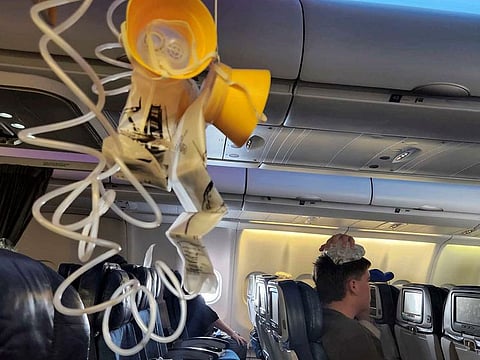Taming air turbulence: Can this new gear help pilots and passengers avoid bumps?
Heads-up alert pinpoints turbulence intensity, helps boost flight safety and comfort

Imagine air turbulence as a swirling storm of invisible currents. A new system is unveiling these hidden dangers in the sky.
For one, it gives real-time "heads-up" to pilots, enough to avoid them. How?
It uses a measurement known as Eddy Dissipation Rate (EDR), a new industry-standard metric that acts like a turbulence radar, measuring the intensity of these hidden airflows.
Safer skies, smoother flights
By quantifying turbulence with EDR, airlines can identify and avoid bumpy zones. Essentially, EDR data helps pilots steer clear of areas with strong turbulence, enhancing passenger comfort and safety.
It also improves weather forecasting. EDR can be integrated into weather models, leading to more accurate predictions of turbulence, especially unpredictable clear-air turbulence (CAT).
Here’s why EDR is helpful:
Eddies can be roughly the size of an airplane, causing one wing to rise while the other dips, or rapid altitude changes. Professor Thomas Guinn of Embry-Riddle Aeronautical University explains, "This can be quite disorienting and even lead to injuries for passengers and crew who aren't buckled up."
Recent events show serious injuries from air turbulence are expected to soar. Turbulence has increased substantially in many areas of the planet.
US Federal Aviation Administration (FAA) data indicates that 58 people are injured by turbulence each year – primarily for not wearing their seatbelts. This data only applies to the US.
CAT: The sneaky threat you can't see
Imagine smooth sailing through the sky, then suddenly, your drink sloshes and you're tossed around like a leaf in the wind. That's turbulence, unpredictable air movements that can make flying bumpy. While most people associate turbulence with storms, a particularly dangerous type lurks unseen – clear-air turbulence (CAT). CAT forms when high-altitude jet streams, fast-moving rivers of air, encounter wind shear. Imagine two cars driving side-by-side, but at different speeds. The sudden difference in speed creates chaos. Similarly, when air masses within a jet stream move at different speeds, the atmosphere gets turbulent, forming invisible eddies like whirlpools in water.
Safety concern
Global industry data on air-turbulence related injuries are not readily available, turbulence is now viewed as a serious safety concern. It is the leading cause of serious injury and non-fatal airline incidents among airline passengers.
A recent report by the US National Transportation Safety Board (NTSB) raises concerns about turbulence-related injuries on airplanes. Here's the key takeaway:
In terms of severity, the National Transportation Safety Board (NTSB) in the US found that over a third of all airline incidents between 2009 and 2018 were turbulence-related, with most resulting in serious injuries but no aircraft damage.
And based on academic research of the atmosphere, the injury numbers could rise,as more people fly.
This highlights the importance of following safety instructions (for passengers) and for airlines to consider crew safety measures during turbulence.
Who's most vulnerable?
Industry collaboration
Until recently, both commercial and business aviation rely on forecasting and pilot reports. The problem is that these reports are often untimely and do not always accurately indicate where turbulence is or how it will affect another aircraft.
Now, the industry is intensifying collaborations.
One solution: an automated collection of aircraft-generated turbulence reports shared in real time across the industry.
This enables pilots and dispatchers around the world to mitigate passenger and crew turbulence-related injuries while giving passengers a smoother, more comfortable and safer journey.
This is facilitated by the “IATA Turbulence Aware” (ITA) platform.
How to ITA works:
EDR pinpoints turbulence intensity, boosting flight safety and comfort. It is also revolutionising real-time data sharing among platform use rs.Imagine a system where aircraft share real-time EDR data, creating a constantly updated picture of atmospheric turbulence for pilots.
Benefits beyond the cockpit:
EDR can be applied in the cockpit and beyond aviation:
The future of flight
EDR is a powerful tool poised to transform air travel. By providing a way to measure and predict turbulence, EDR promises safer, smoother, and more comfortable flights for you and me.
Sign up for the Daily Briefing
Get the latest news and updates straight to your inbox



